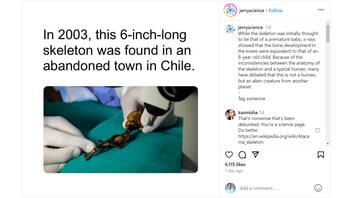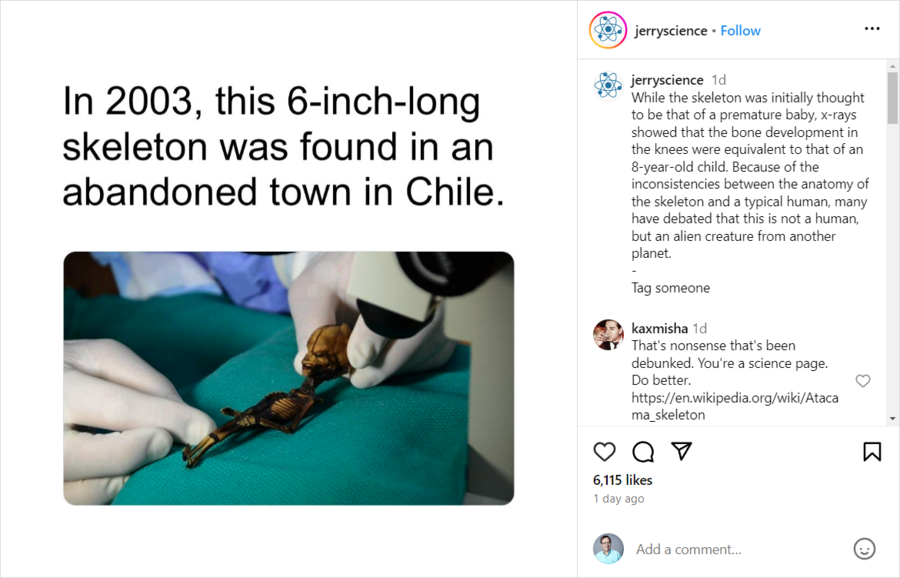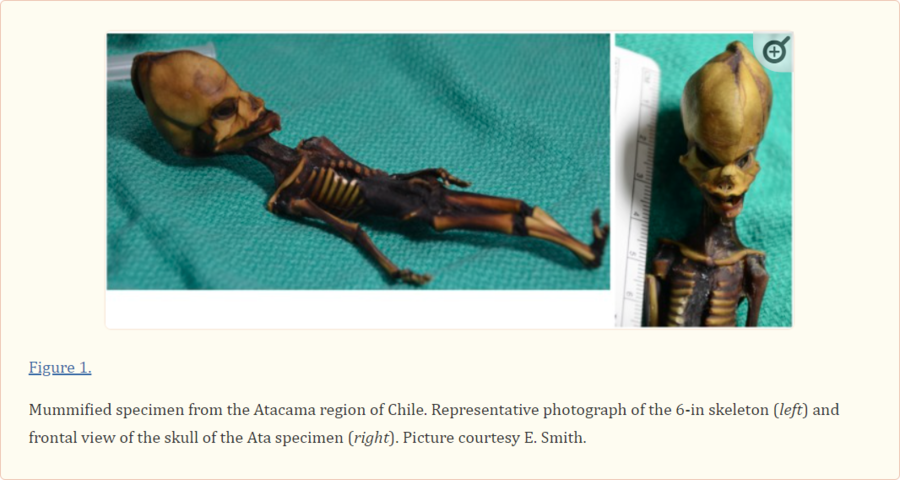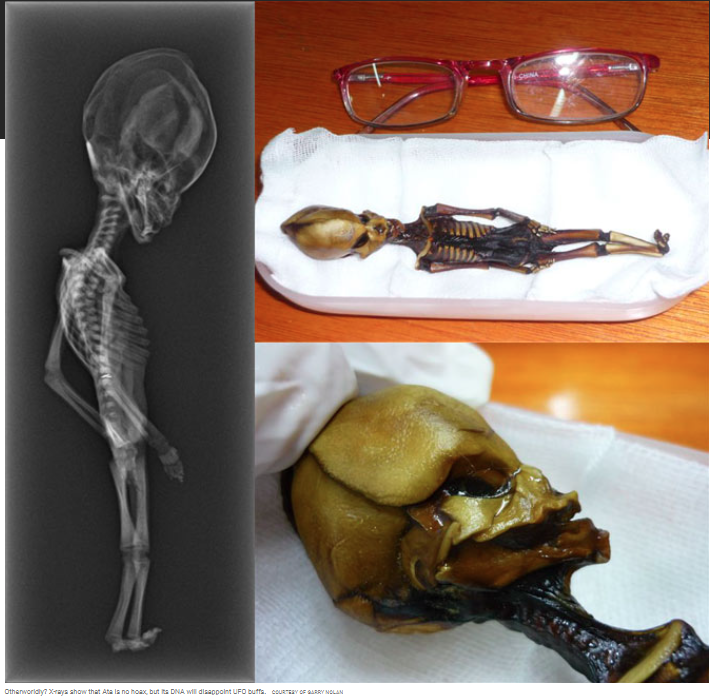
Does a picture on social media of a tiny skeleton found in Chile's Atacama Desert show an "alien creature from another planet"? No, that's not true: The skeleton in question has been extensively studied. Scientific analysis, including DNA testing, has determined that the mummified body is of human origin and likely represents the remains of a human female fetus with severe skeletal abnormalities caused by multiple mutations associated with bone disease.
The claim appeared in a post (archived here) on Instagram by jerryscience on February 1, 2024, under the title "In 2003, this 6-inch-long skeleton was found in an abandoned town in Chile." The post's caption said:
While the skeleton was initially thought to be that of a premature baby, x-rays showed that the bone development in the knees were equivalent to that of an 8-year-old child. Because of the inconsistencies between the anatomy of the skeleton and a typical human, many have debated that this is not a human, but an alien creature from another planet.
-
Tag someone
This is what the post looked like on Instagram at the time of writing:
(Source: Instagram screenshot taken on Fri Feb 2 17:13:13 2024 UTC)
The skeleton
The tiny body, known as the Atacama humanoid skeleton or Ata, was discovered in the deserted mining town of La Noria in the Atacama region of Chile in 2003, according to a Genome Research paper (archived here) published in April 2018.
A Google News search (archived here) shows Ata has been widely studied and written about in the more than two decades since its discovery. The paper titled "Whole-genome sequencing of Atacama skeleton shows novel mutations linked with dysplasia" includes these photos:
(Source: National Library of Medicine screenshot taken on Fri Feb 2 18:23:03 2024 UTC)
Another collection of pictures, provided by Stanford University researcher Garry Nolan, was published on the Science website (archived here) on May 3, 2013, in a story called "Bizarre 6-Inch Skeleton Shown to Be Human." The images are below:
(Source: Science screenshot taken on Fri Feb 2 18:37:58 2024 UTC)
Nolan, who was involved in the research previously cited in this story, also co-authored another paper, titled "The Atacama skeleton" (archived here), which was published in the scientific journal Genome Research in 2018. The paper, reportedly scrutinized multiple times prior to publication, concluded that peer-reviewed DNA analysis makes "it possible to determine definitively that the DNA we obtained from the skeleton was that of a modern human ..."
By showing beyond a doubt that this is the skeleton of a Chilean human female, the current study and previous work at Stanford in 2013 have at last provided a definitive scientific basis to put a stop to unscientific accounts of the skeleton's true human nature and to accord it the dignity it deserves. As noted, we believe our results underscore the importance of a larger discussion on such samples, including other human remains in anthropological studies currently being discussed in the press.
This was a girl with many DNA mutations, not anything more exotic. Further functional studies of these alterations may lead to a clearer understanding of the genes that regulate bone development and might help the world diagnose and treat other children with genetic diseases driving bone growth abnormalities.
Read more
Additional Lead Stories fact checks of claims involving aliens can be found here.


















